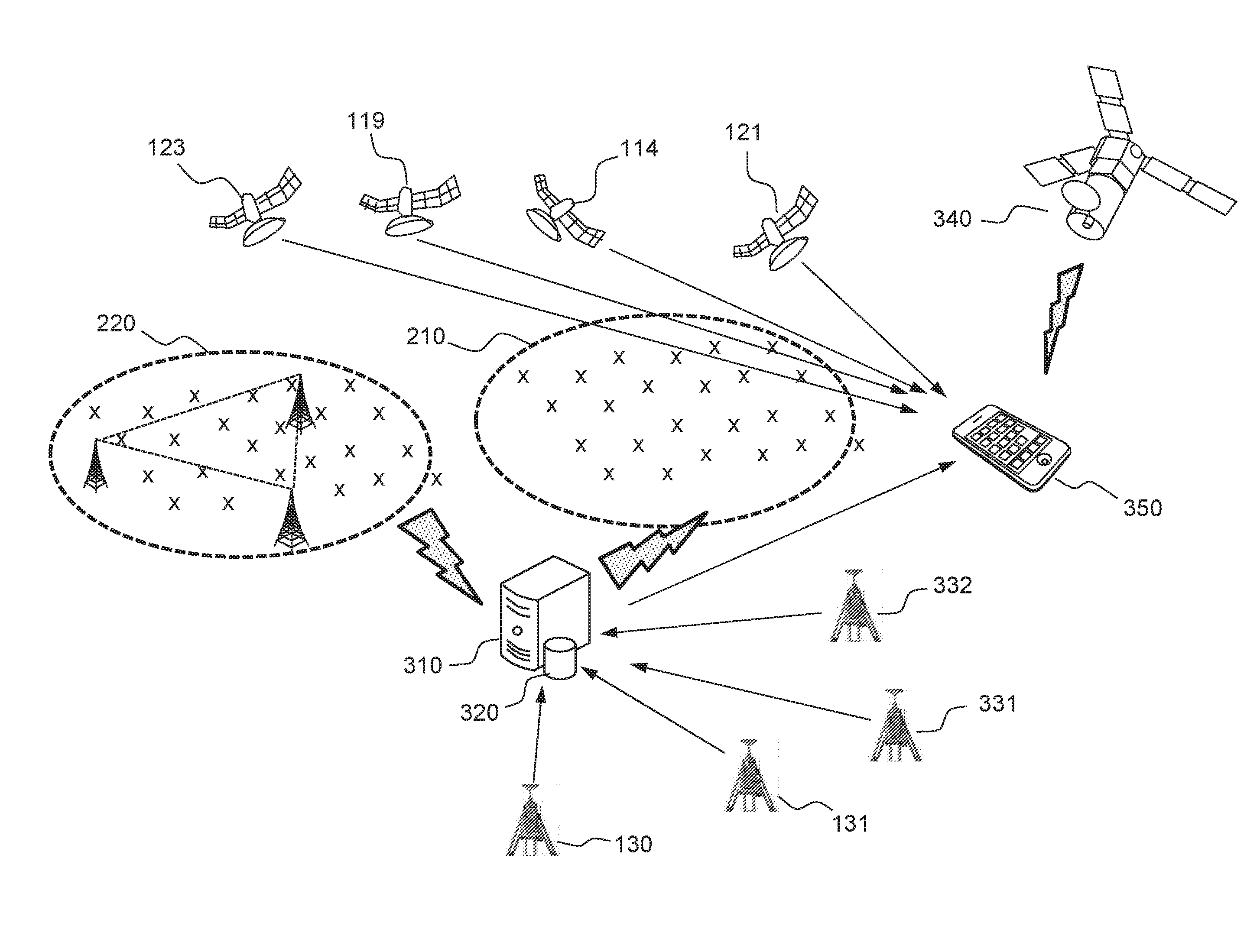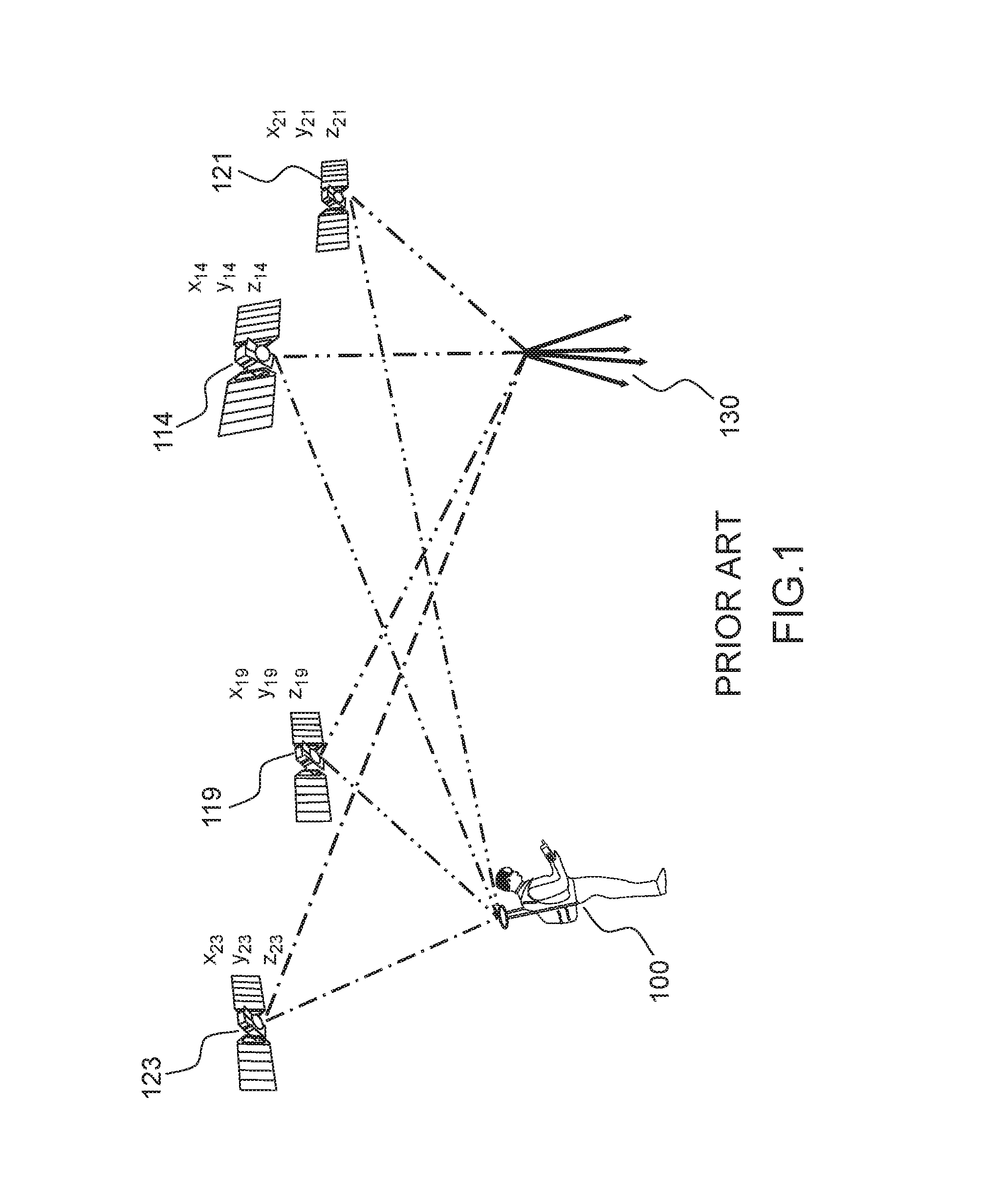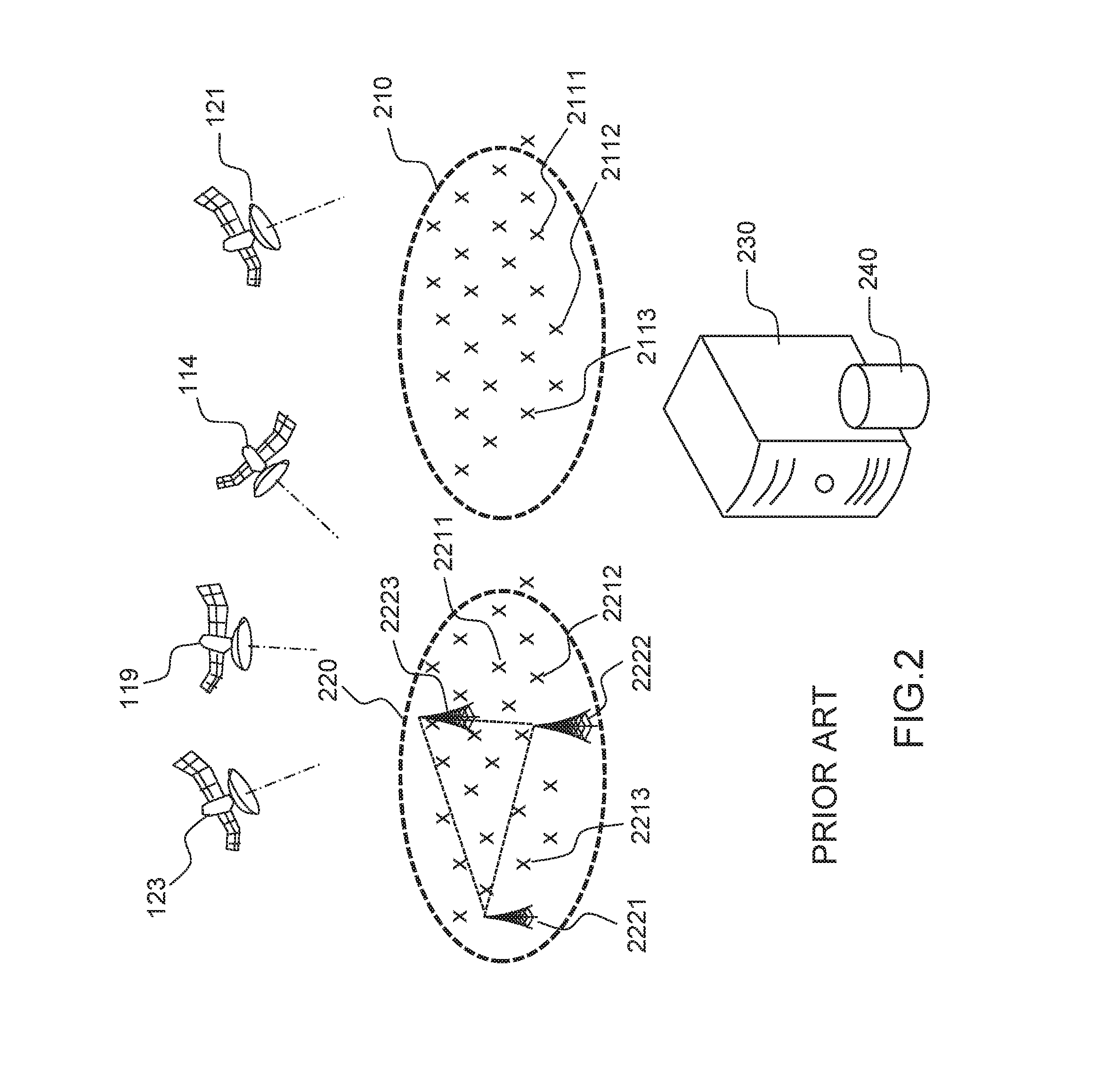GNSS receiver with an on-board capability to implement an optimal error correction mode
a technology of error correction mode and receiver, applied in the field of satellite navigation, can solve the problems of inability to achieve better positioning accuracy, inability to achieve accurate positioning, etc., to achieve the effect of improving positioning accuracy, reducing the number of consumer applications, and not being acceptable for professional applications
- Summary
- Abstract
- Description
- Claims
- Application Information
AI Technical Summary
Benefits of technology
Problems solved by technology
Method used
Image
Examples
Embodiment Construction
[0040]FIG. 1 represents a differential GNSS system of the prior art.
[0041]In a positioning system of a differential type, a user 100 receives positioning signals from at least a satellites constellation, 114, 119, 121, 123. The positioning signals from these satellites are also received by a reference station 130. The user 100 may be moving. The reference station 130 must have a position which is fixed, known with enough precision and located in a radius of 10 to 20 km from the user 100. (see for instance http: / / www.navidedia.net / index.php / RTK_Fundamentals).
[0042]An RTK algorithm can use the code or the phase of the navigation signal, or a combination of both, possibly with a variable weighting. Precision of a position calculation using the phase of the navigation signal is better, because it is less noisy, but the price to be paid is the complexity of solving the integer ambiguity of the measurement.
[0043]An RTK system can not only correct the atmospheric errors (ionosphere, tropos...
PUM
 Login to View More
Login to View More Abstract
Description
Claims
Application Information
 Login to View More
Login to View More - R&D
- Intellectual Property
- Life Sciences
- Materials
- Tech Scout
- Unparalleled Data Quality
- Higher Quality Content
- 60% Fewer Hallucinations
Browse by: Latest US Patents, China's latest patents, Technical Efficacy Thesaurus, Application Domain, Technology Topic, Popular Technical Reports.
© 2025 PatSnap. All rights reserved.Legal|Privacy policy|Modern Slavery Act Transparency Statement|Sitemap|About US| Contact US: help@patsnap.com



